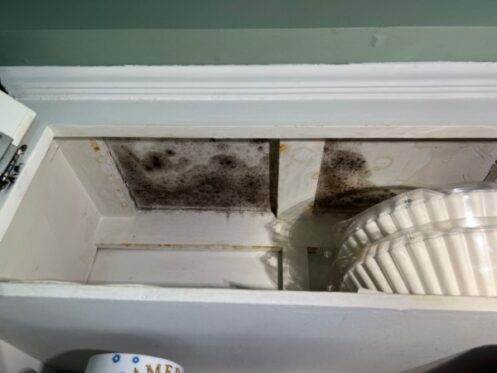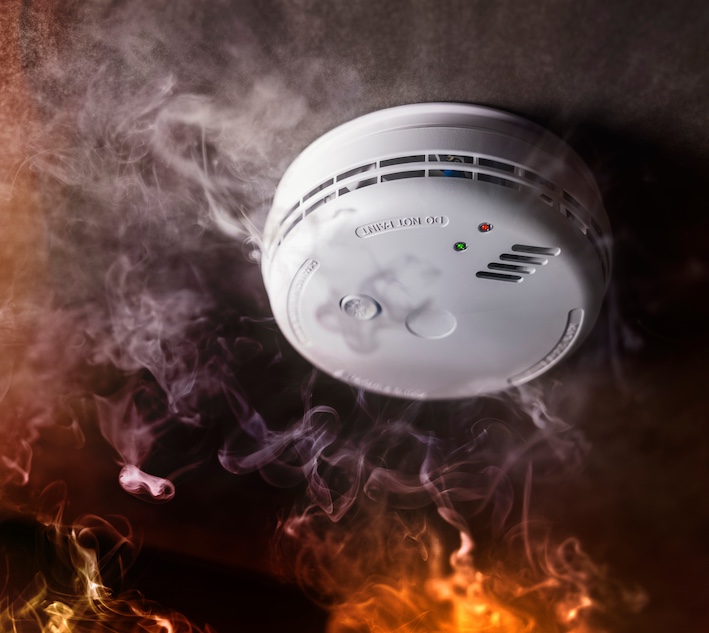Mold exposure is not just a health hazard for humans. It can also have serious effects on our feline friends. Cats, like other pets, are susceptible to the dangers of mold spores. Understanding the symptoms of mold exposure in cats can help you protect your furry companion. Let’s go over the signs of mold exposure in cats, the potential health risks, and what you can do to prevent and address this issue.
Common Symptoms of Mold Exposure in Cats
Cats exposed to mold may exhibit various symptoms, some of which can be easily mistaken for other health issues. Here are the most common signs to watch for:
Respiratory Issues
Mold spores can irritate a cat’s respiratory system, leading to symptoms similar to those of humans. Persistent coughing and sneezing can indicate your cat has inhaled mold spores. Wheezing when your cat breathes may suggest respiratory distress. Difficulty breathing or shortness of breath can indicate a more severe reaction.
Allergic Reactions
Just like humans, cats can have allergic reactions to mold. Excessive scratching or grooming can be a sign of itchy skin caused by an allergic reaction. Look for red, inflamed patches of skin, especially if your cat is itching more than usual. Watery eyes and runny nose can also appear in cats.
Behavioral Changes
Mold exposure can affect your cat’s behavior. If your cat is unusually tired or less active than normal, mold exposure may be the culprit. A sudden decrease in appetite can be a sign of illness, including sickness from mold. Cats often hide when they are not feeling well. If your cat is spending more time in secluded areas, it may be due to discomfort caused by mold exposure.
Gastrointestinal Upset
Eating mold spores can cause digestive problems like vomiting and diarrhea. Frequent vomiting can mean your cat has ingested mold. Loose stools can also be a sign of mold exposure in cats.
Long-Term Health Risks
Prolonged mold exposure can lead to more serious health conditions in cats:
Chronic Respiratory Issues
When mold spores are inhaled, they irritate the cat’s respiratory system, leading to coughing, sneezing, wheezing, and difficulty breathing. Over time, continued exposure to mold can result in more severe conditions such as chronic bronchitis or asthma.
The constant irritation can weaken the cat’s ability to fight off infections, causing recurring respiratory problems. In severe cases, mold exposure can cause life-threatening conditions like pulmonary hemorrhage, where the lungs’ blood vessels bleed.
Fungal Infections
Some molds can cause fungal infections, which may require medical treatment. Mold spores can land on a cat’s skin, paws, or mucous membranes, causing infections like ringworm, aspergillosis, or blastomycosis. These infections can result in skin lesions, itching, redness, and hair loss.
In more severe cases, mold spores can infect internal organs, causing systemic infections. For example, aspergillosis can affect a cat’s nasal passages and lungs, leading to severe breathing problems. Treating fungal infections requires quick veterinary care, often involving antifungal medications.
Weakened Immune System
The immune system is continually working to fight off the mold spores, leading to fatigue and reduced effectiveness over time. This weakened state makes cats more susceptible to other infections and illnesses.
The toxins produced by certain molds can directly damage immune cells, further weakening the immune response. Ensuring your cat’s environment is free from mold and providing a healthy diet to support immune function can help protect against the harmful effects of mold exposure.
Regular Vet Check-Ups
Regular veterinary check-ups can help catch health issues early. Inform your vet if you suspect mold exposure. Your cat will undergo a thorough examination to determine the extent of the exposure and any related health problems. The vet may perform tests such as blood work, X-rays, or skin cultures to diagnose the condition accurately.
Prevention
Regular Cleaning
Keep your home clean and dry to minimize mold growth. Pay special attention to damp areas like basements, bathrooms, and kitchens. Preventing mold growth in your home and keeping your cat’s environment clean and dry are crucial steps to avoid infections.
Proper Ventilation
Maintaining good air quality can help prevent mold-related respiratory issues. To reduce moisture buildup, ensure your home is well-ventilated. Use dehumidifiers in areas prone to dampness.
Inspection
If you suspect mold in your home, hire a professional inspection and remediation service, like Pur360, to identify and eliminate the problem.
Mold exposure can harm your cat’s health, causing symptoms and potential long-term problems. You can keep your cat safe by spotting the signs of mold exposure and taking steps to prevent and eliminate mold in your home. If you suspect your cat is affected by mold, see your vet for a proper diagnosis and treatment. Keeping your home mold-free is crucial for the health of everyone in your family, including your pets.
Pur360 is committed to keeping your home and cats safe from mold. Our team uses chemical-free treatments to remove mold and prevent it from returning. We know how harmful mold can be for cats, so we use eco-friendly methods that are safe for everyone in your home. By fixing mold problems at the source, we reduce the risk of health issues caused by mold exposure. Trust Pur360 to protect your home and your pets from mold.



